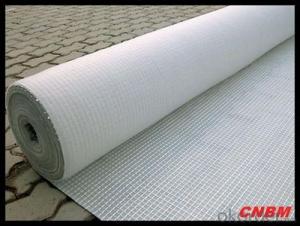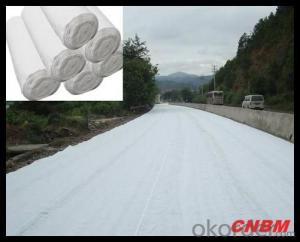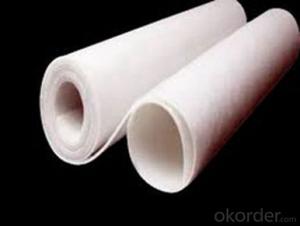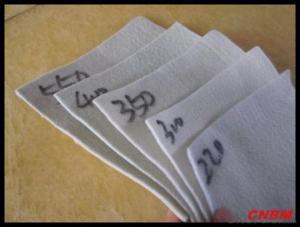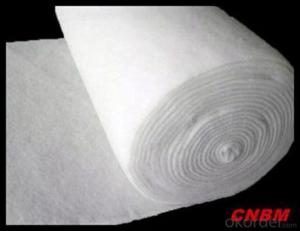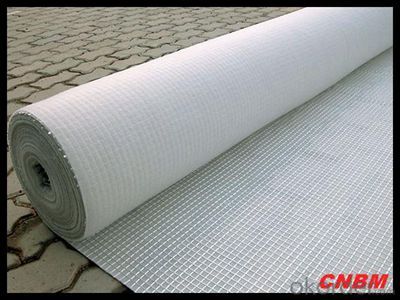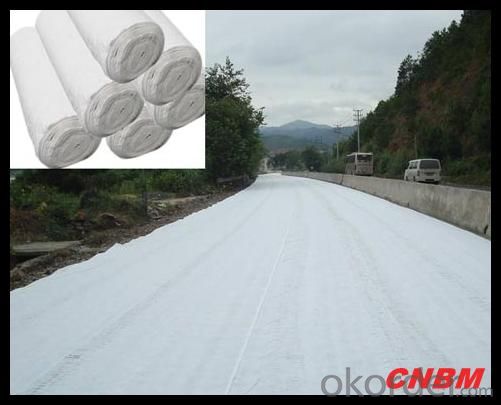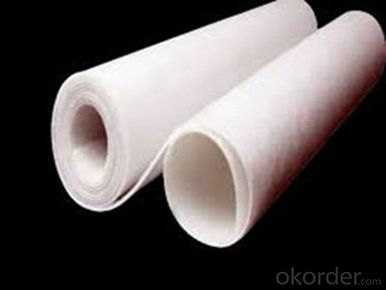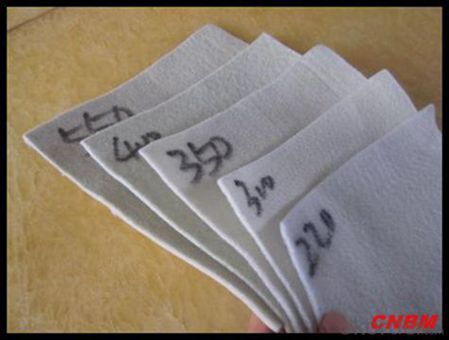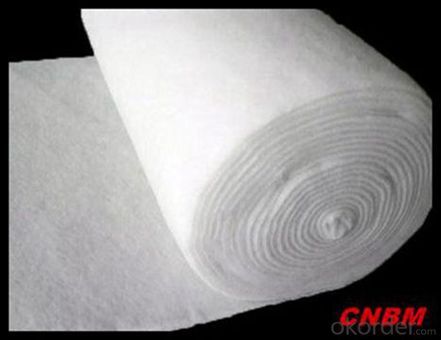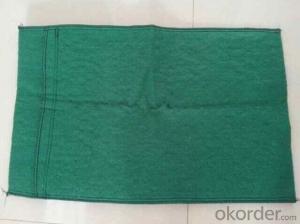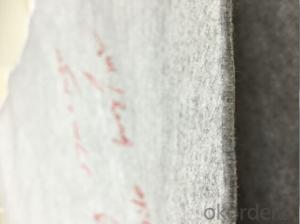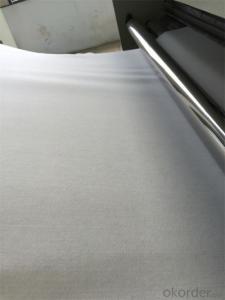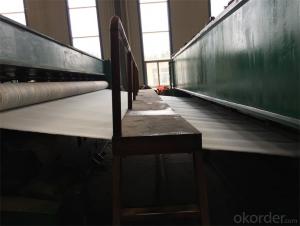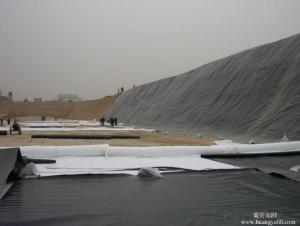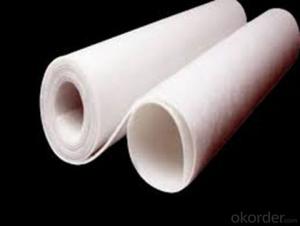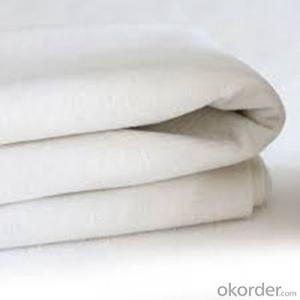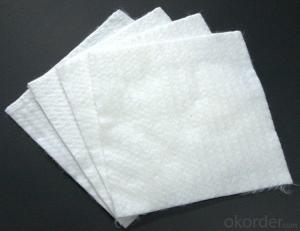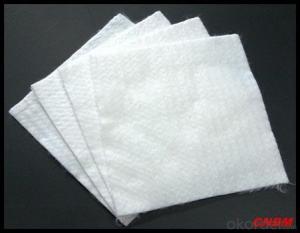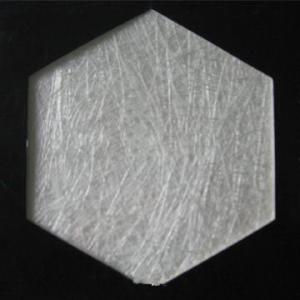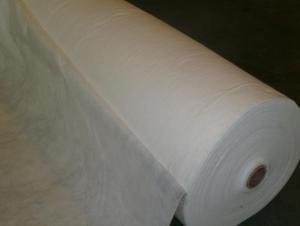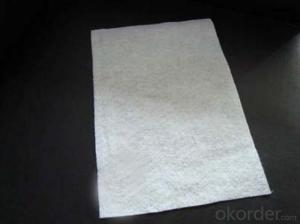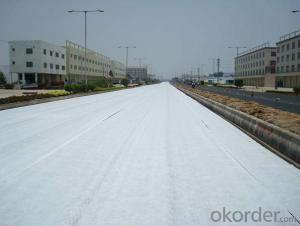Geotextile Filter Layer Needle Punch Geotextile for Railway from CNBM
- Loading Port:
- China main port
- Payment Terms:
- TT OR LC
- Min Order Qty:
- 3000 g/m²
- Supply Capability:
- 1000000 g/m²/month
OKorder Service Pledge
OKorder Financial Service
You Might Also Like
Specification
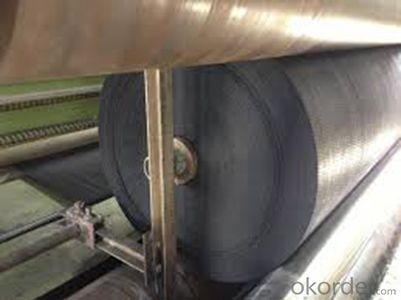
Specification:
1.Unit weight 100g/sqm,150g/sqm,200g/sqm,250g/sqm,300g/sqm,350g/sqm,400g/sqm,450g/sqm,500g/sqm,600g/sqm,800g/sqm
2.Width
1m-8m
3.Length:
Per clients' request
Application of geotextile
Filtration
It can be the filtration layer of the dykes, river canal, seacoast, concrete slope, retaining walls. At the same time of preventing the clay granule from passing, it allows the water and the gas pass through freely.
Separation
The isolation of the railway dregs and the roadbed, roadbed and the soft base, surface of the airdrome and parking lot and the groundsill, different dam materials. It isolates the soil and the gravel of two kinds different
granule pathway from the groundsill or other buildings.
Reinforcement
The highway, railway, soil-stone dam, breakwater, airport, backfill soil of retaining wall, slope protection, etc in which distributes the earth stress, prevents the side-displacement of the earth body and improves the earthbody stability.
Protection
It prevents the bank from being washed out, protects the bank and the
bottom, prevents the water and soil from being washed away.
1.On a regular basis or as per your request,we entrust national testing agencies to conduct quality inspections
2. Strictly in accordance with the ISO9001-2008 international quality system standard,we monitor and manage the whole process throughout production,quality testing,and measurement to ensure product quality
3. For quality-related construction delay or substandard construction(except for damage or losses due to customer’s responsibility or irresistible natural disasters),we have refunding,replacement,and repair services.We will respond to customers’ feedbacks on quality issues within 24 hours.
After-sales service
1.In order to provide customers with comprehensive technical support,we will provide technical and other related information upon request in a timely manner.
2.In required,we will appoint specialized technicians to the construction site to give technical trainings to construction people,and offer technical guidance throughout the whole construction process.
3.For damage due to shipment and delivery,after we receive the complaint,we will check the issure through provided pictures and videos.If our responsibility is confirmed,we wil offer free replacement.
4.When the construction is completed,as your request,our technical staff may participate in the final acceptance.
FAQ:
Q: What kind of payments does jenor support?
A: T/T, L/C, Cash are accepted.
Q: Do you charge for the samples?
A: Accordeing to our company policy, the samples are free, we only charge the freight fee. And we will return the freight fee during the next order.
Q: Can you produce according to customers' design?
A: Sure, we are professional manufacturer, OEM and ODM are both welcome.
Q: Do you have other products?
A: Yes, please check the pictures:
- Q: Can geotextiles be used in the construction of wastewater treatment plants?
- Yes, geotextiles can indeed be used in the construction of wastewater treatment plants. Geotextiles are commonly used in these projects for various purposes such as filtration, separation, erosion control, and reinforcement. They can be applied in different areas including lining of ponds, filtration of effluent, protection of pipes, and stabilization of soil. Geotextiles help enhance the efficiency and longevity of wastewater treatment plants by providing necessary support and functionality.
- Q: Sng400-2.5gb / t-1998 geotextile is what the specifications
- SNG400-2.5 refers to the national standard polyester staple acupuncture non-woven geotextile 400g / ㎡, width 2.5m. The standard code for the GB / T-1998 staple fiber nonwoven geotextile is generally the SNG / (1) (2) / (3) - (4) / (5). (1) that the use of raw materials fiber code: PET-polyester, PP-polypropylene, PA-nylon, PV-vinylon, PE-Ethylene (conventional polyester are generally vacant omitted code) (2) that polyester staple fiber non-woven Geotextile per unit area weight. (3) that the composite products in the polyester staple fiber non-woven geotextile weight per unit area, non-composite product vacancies. (4) width, expressed in meters (5) production department number: can express the product more specific characteristics, functions, varieties, sequences, etc., the general vacancy. For example, 2.5m wide 400g / ㎡ polyester staple fiber non-woven geotextile representation of the method can be SNG / PET400-2.5, can also be expressed as SNG400-2.5
- Q: Can geotextiles be used in mine tailings dewatering applications?
- Yes, geotextiles can be used in mine tailings dewatering applications. Geotextiles are commonly used in this context to separate solids from liquids, allowing for the efficient dewatering of mine tailings and the retention of solid particles. They provide effective filtration and drainage, reducing the moisture content of tailings and facilitating their disposal or further processing.
- Q: Detailing the geotextile standard which, how to apply their own
- Detailing the geotextile standard which, how to apply their own
- Q: Reinforced geotextiles and composite soil is not the same
- Reinforced geotextile is from its use up, played a role in reinforcement, called reinforced geotextile. Composite geotextile refers to the process, is woven and non-woven acupuncture geotextile, through the acupuncture together with the geotextile. In other words, the ordinary non-woven acupuncture geotextile and composite geotextile in the use of if it is used to reinforced, can be called reinforced geotextile. Huazhi geotextile material manufacturers
- Q: Can geotextiles be used for reinforcement of railway embankments?
- Yes, geotextiles can be used for reinforcement of railway embankments. Geotextiles can provide stability and strength to the embankments by distributing loads, improving soil retention, reducing soil erosion, and enhancing drainage. Additionally, they can help prevent deformation and settlement, increasing the overall durability and lifespan of the embankments.
- Q: What are the different geotextile installation techniques in reinforcement?
- There are several geotextile installation techniques used in reinforcement, including direct placement, sandwich method, and wrap-around method. In direct placement, the geotextile is laid directly on the soil or subgrade and then covered with additional soil or aggregate. The sandwich method involves placing the geotextile between two layers of soil or aggregate, creating a reinforced layer. The wrap-around method involves wrapping the geotextile around a structure, such as a retaining wall or pipe, to provide additional support and stability. These installation techniques help improve the strength and performance of soil structures in various engineering applications.
- Q: What are the advantages of using geotextiles in agriculture?
- Geotextiles offer several advantages in agriculture. Firstly, they help in soil erosion control by preventing the loss of topsoil and retaining moisture. Secondly, they aid in weed suppression, reducing the need for herbicides and manual weeding. Additionally, geotextiles assist in soil stabilization, enhancing the structural integrity of the soil and preventing erosion on slopes. Lastly, they promote better drainage, allowing excess water to flow away while retaining essential nutrients in the soil.
- Q: What are the applications of geotextiles?
- Geotextiles find extensive applications in various industries and sectors. They are commonly used in civil engineering for soil stabilization, erosion control, and drainage. Geotextiles also play a crucial role in the construction of roads, railways, and embankments by providing reinforcement, filtration, and separation functions. Additionally, they are utilized in environmental projects like landfills, coastal protection, and wastewater treatment. Geotextiles offer versatility, durability, and cost-effectiveness, making them an essential component in infrastructure development and environmental conservation.
- Q: Are geotextiles resistant to fungal growth?
- Yes, geotextiles are generally resistant to fungal growth due to their synthetic nature and non-biodegradable properties. This resistance helps maintain their structural integrity and effectiveness in various applications.
Send your message to us
Geotextile Filter Layer Needle Punch Geotextile for Railway from CNBM
- Loading Port:
- China main port
- Payment Terms:
- TT OR LC
- Min Order Qty:
- 3000 g/m²
- Supply Capability:
- 1000000 g/m²/month
OKorder Service Pledge
OKorder Financial Service
Similar products
Hot products
Hot Searches
Related keywords
